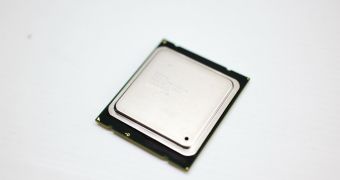Expected to arrive in the first part of 2012, Intel's eight-core Xeon E5 processors on the LGA 2011 socket are rumored to be using the second revision of the Sandy Bridge-E core that will fix a series of issues present in the current C1 desktop stepping.
The C1 revision of Sandy Bridge-E is what Intel used for designing the Core i7-3960X and Core i7-3930K processors that were launched and the beginning of this week.
As our review of the Core i7-3960X has shown, when used for running highly multi-threaded apps the performance that Sandy Bridge-E is capable of is downright impressive, but despite all this power the C1 revision still has some issues that were left unresolved.
The most important of these for workstation and server users is the lack of VT-d hardware virtualization.
This can be a real show stopper where hardware acceleration of a virtual machine is a must, so Intel plans to fix this issue in the C2 revision of Sandy Bridge, which will be used for the company's upcoming Xeon E5 processors.
In addition to the VT-d fix, TechPowerUp also mentioned that select Xeon E5 CPUs will also come with the full eight cores present in the Sandy Bridge-E architecture enabled, since these no longer have to fit inside the 130W of their desktop counterparts.
A firm release date for these chips hasn't been mentioned, but Intel said recently that it has already starting sampling Xeon E5 chips to select number of cloud and HPC computer vendors, with mass availability expected in Q1 of 2012.
Besides the eight computing cores, Intel's Xeon E5 CPUs can also pack a tri- or quad-channel memory controller, up to 20MB of Level 3 cache memory, 2 QPI links, 40 PCIe Gen3 lanes, and four DMI 2.0 lanes.

 14 DAY TRIAL //
14 DAY TRIAL //